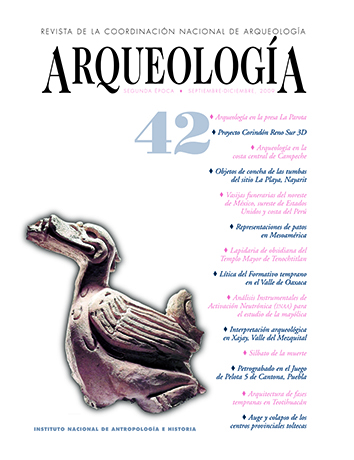Whistle death
Abstract
This article shows the advances in research on the extraordinary whistle of death, used in ancient Mexico. The analysis begins with the study of a ceramic fragment from Mazatepetl that belongs to an extraordinary, little-known acoustic family; this musical instrument produces sounds like some animal calls or the whispering of the wind. The whistle of the death has been associated with death rituals, because it is decorated with a skull. Two whistles were found in the hands of a sacrificial victim in front of the Ehecatl temple in Tlatelolco. This article provides general information about ancient sound fields and buccal noise generators analyzed and identified by the author as similar to the death whistle sound mechanism. Its organological, functional, and acoustic characteristics and its experimental models are also discussed. Data available about the Mazatepetl fragment, as well as its possible construction procedure and the probable uses of its sounds are described. Finally, this article suggests further work and offers suggestions on paths for future research.



